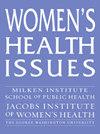Adolescent and Young Adult Perspectives on Contraception Post-Dobbs: “The Next Closest Step to Having Control Over My Own Body”
IF 2.5
2区 医学
Q2 PUBLIC, ENVIRONMENTAL & OCCUPATIONAL HEALTH
引用次数: 0
Abstract
Purpose
Adolescents and young adults (AYAs) face unique barriers to contraceptive care that may be exacerbated by the June 2022 Dobbs v. Jackson Women's Health Organization decision that removed federal protections for abortion rights. We examined AYA perspectives on contraception and measured changes in AYA contraceptive use pre- and post-Dobbs.
Materials and Methods
This study used a mixed-methods design. We analyzed qualitative data from the MyVoice project, an SMS-based survey among AYAs ages 14–24 in the United States. The research team analyzed open-ended responses to questions about the influence of changes to abortion access on AYA contraceptive decision making. We analyzed quantitative data from the IQVIA Longitudinal Pharmacy and Medical Claims data for patients ages 15–26. We identified monthly new contraceptive prescriptions and services for intrauterine device insertion and implant placement in 2021 and 2022. We used segmented regression analyses to test for changes in prescriptions and services post-Dobbs.
Main Findings
Our qualitative analysis identified themes of risk aversion, urgency and fear, and access concerns in response to the Dobbs decision. Our quantitative analysis demonstrated a slight increase in both prescriptions and services in the months immediately after Dobbs, but there were no significant changes in the slope for monthly services post-Dobbs for any age group or method type. We also identified an overall decreasing trend for all age groups and all method types during the full study period of January 2021–December 2022.
Conclusions
Limited changes in contraceptive use despite AYA expressions of fear, feelings of lost agency, and concerns over access may reflect continued (or worsened) barriers to contraceptive access post-Dobbs.
青少年和年轻人对避孕的看法后多布斯:“下一个最接近控制自己身体的步骤”。
目的:青少年和年轻人(AYAs)在避孕护理方面面临着独特的障碍,这种障碍可能会因2022年6月多布斯诉杰克逊妇女健康组织的决定而加剧,该决定取消了联邦对堕胎权的保护。我们研究了阿雅对避孕的看法,并测量了阿雅避孕药使用前后的变化。材料与方法:本研究采用混合方法设计。我们分析了来自MyVoice项目的定性数据,这是一项针对美国14-24岁青少年的短信调查。研究小组分析了对堕胎途径变化对AYA避孕决策影响的问题的开放式回答。我们分析了IQVIA纵向药房和医疗索赔数据中15-26岁患者的定量数据。我们确定了2021年和2022年每月新的避孕处方和宫内节育器插入和植入放置服务。我们使用分段回归分析来检验多布斯后处方和服务的变化。主要发现:我们的定性分析确定了风险规避、紧迫性和恐惧以及对多布斯决定的访问关注等主题。我们的定量分析表明,在多布斯之后的几个月里,处方和服务都有轻微的增加,但在多布斯之后,任何年龄组或方法类型的每月服务斜率都没有显著变化。我们还发现,在2021年1月至2022年12月的整个研究期间,所有年龄组和所有方法类型的总体下降趋势。结论:尽管AYA表达了恐惧、丧失能动性的感觉和对获取的担忧,但避孕药具使用的有限变化可能反映了多布斯事件后避孕药具获取的持续(或恶化)障碍。
本文章由计算机程序翻译,如有差异,请以英文原文为准。
求助全文
约1分钟内获得全文
求助全文
来源期刊

Womens Health Issues
Multiple-
CiteScore
4.50
自引率
6.20%
发文量
97
审稿时长
32 days
期刊介绍:
Women"s Health Issues (WHI) is a peer-reviewed, bimonthly, multidisciplinary journal that publishes research and review manuscripts related to women"s health care and policy. As the official journal of the Jacobs Institute of Women"s Health, it is dedicated to improving the health and health care of all women throughout the lifespan and in diverse communities. The journal seeks to inform health services researchers, health care and public health professionals, social scientists, policymakers, and others concerned with women"s health.
 求助内容:
求助内容: 应助结果提醒方式:
应助结果提醒方式:


